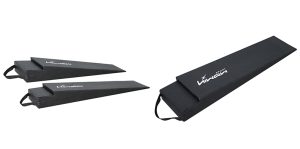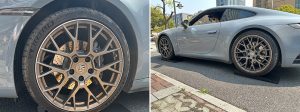When it comes to transporting heavy machinery like tractors, skid steers, or mini excavators, a reliable trailer ramp is a must. In demanding environments such as farms and construction sites, durability and performance are non-negotiable. That’s why investing in a durable trailer ramp built specifically for rugged equipment makes all the difference in safety, efficiency, and long-term value.
Engineered for Heavy Loads
Unlike standard vehicle ramps, trailer ramps for agricultural and construction equipment are designed to handle extreme weights. These ramps are typically constructed from reinforced steel or high-grade aluminum, with load capacities ranging from 5,000 to over 20,000 pounds. They provide stable support for loading wheeled or tracked machinery onto flatbeds, trailers, or transport vehicles.

Non-Slip Surface for Safety
Working conditions on farms and construction sites are rarely ideal—mud, gravel, and dust can all increase the risk of slips. A good trailer ramp comes with a non-slip surface such as serrated steel grating or punched traction holes to ensure safe loading, even in wet or uneven terrain.
Built to Withstand Harsh Environments
From exposure to rain and sun to constant contact with heavy-duty tires and steel tracks, ramps in these sectors take a beating. That’s why durable trailer ramps are built with rust-resistant coatings, welded structural reinforcements, and weatherproof finishes that extend service life even in the toughest outdoor environments.

Key Benefits
Supports extreme weight loads
Safe, anti-slip surface
Resists bending and deformation
Corrosion-resistant for long-term outdoor use
Optional features like handles, folding designs, or mounting kits
Common Applications
Tractor and Combine Harvester Transport
Mini Excavators and Skid Steer Loaders
Compact Utility Vehicles (UTVs)
Construction Rollers and Cement Mixers
Heavy Equipment Relocation Between Job Sites
Whether you’re hauling agricultural machinery across fields or moving construction equipment between projects, a durable trailer ramp provides the strength and stability needed to get the job done safely. With the right ramp in place, you can protect your equipment, speed up operations, and reduce the risk of workplace accidents.





